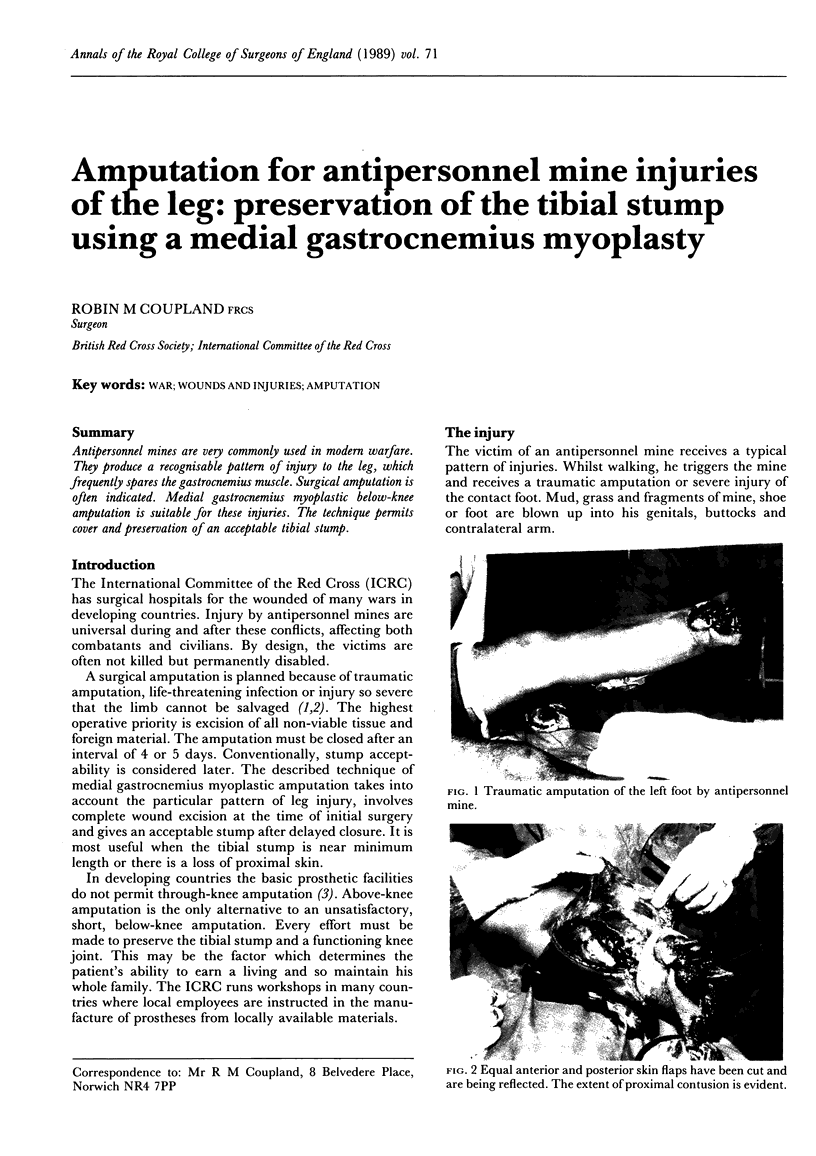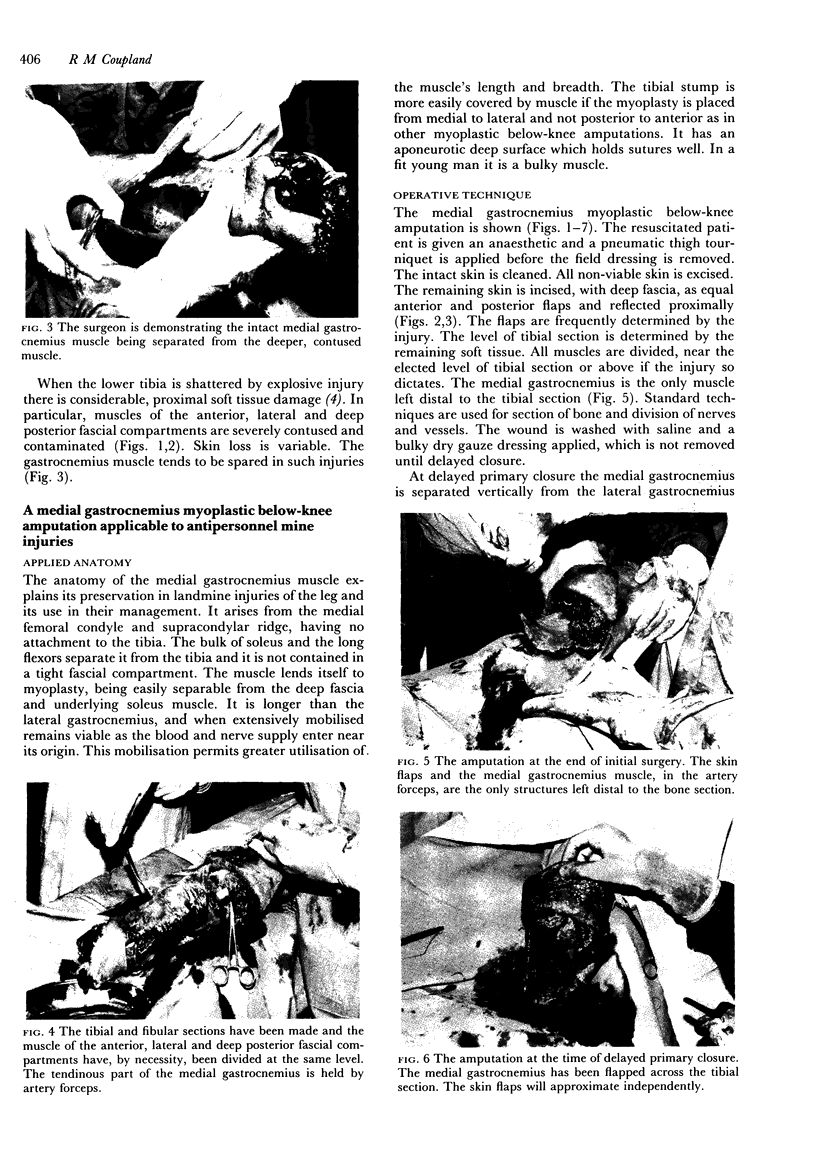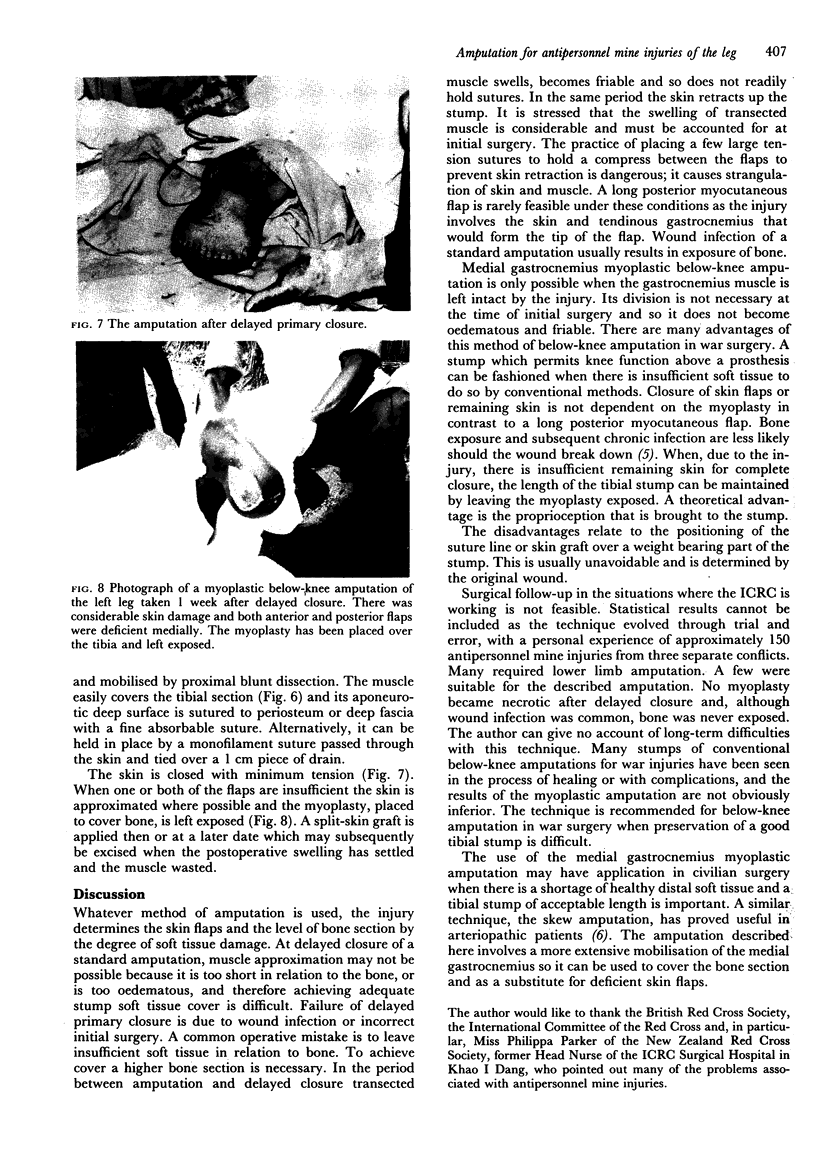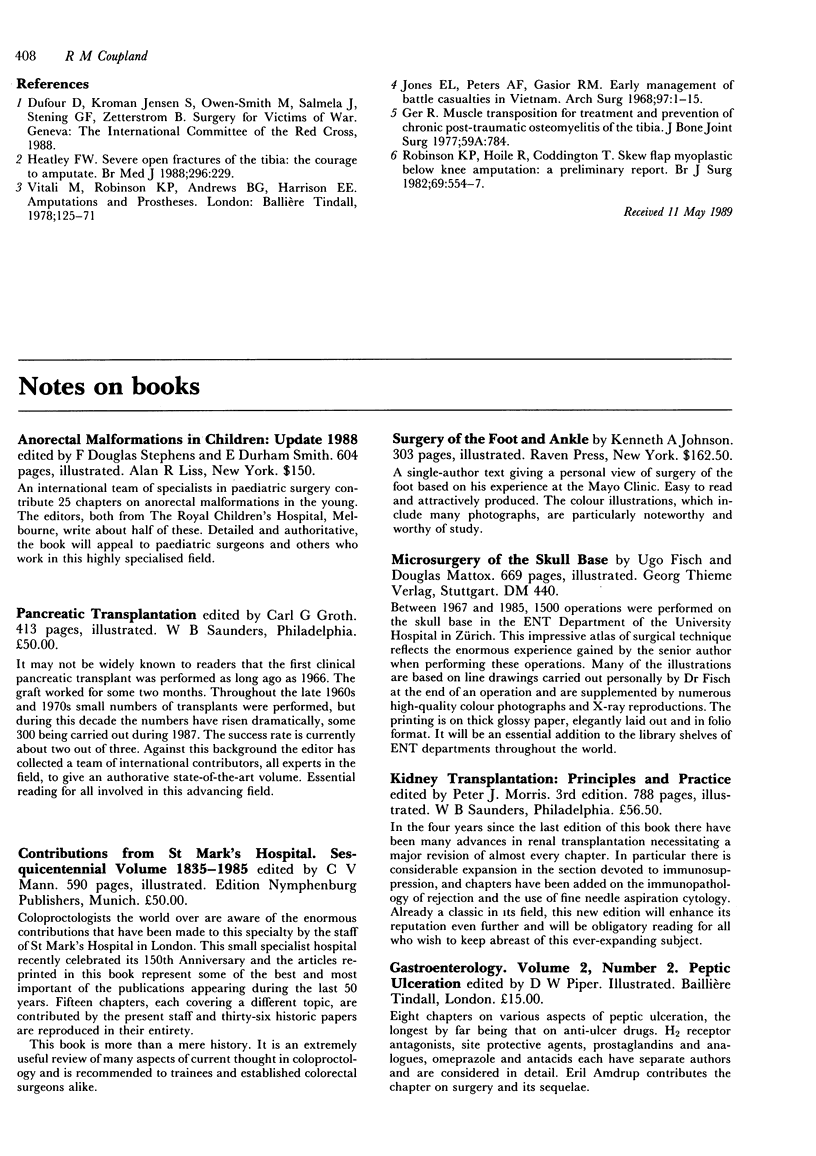Abstract
Antipersonnel mines are very commonly used in modern warfare. They produce a recognisable pattern of injury to the leg, which frequently spares the gastrocnemius muscle. Surgical amputation is often indicated. Medial gastrocnemius myoplastic below-knee amputation is suitable for these injuries. The technique permits cover and preservation of an acceptable tibial stump.
Full text
PDF



Images in this article
Selected References
These references are in PubMed. This may not be the complete list of references from this article.
- Ger R. Muscle transposition for treatment and prevention of chronic post-traumatic osteomyelitis of the tibia. J Bone Joint Surg Am. 1977 Sep;59(6):784–791. [PubMed] [Google Scholar]
- Heatley F. W. Severe open fractures of the tibia: the courage to amputate. Br Med J (Clin Res Ed) 1988 Jan 23;296(6617):229–229. doi: 10.1136/bmj.296.6617.229. [DOI] [PMC free article] [PubMed] [Google Scholar]
- Jones E. L., Peters A. F., Gasior R. M. Early management of battle casualties in Vietnam. An analysis of 1,011 consecutive cases treated at a mobile army surgical hospital. Arch Surg. 1968 Jul;97(1):1–15. doi: 10.1001/archsurg.1968.01340010031001. [DOI] [PubMed] [Google Scholar]
- Robinson K. P., Hoile R., Coddington T. Skew flap myoplastic below-knee amputation: a preliminary report. Br J Surg. 1982 Sep;69(9):554–557. doi: 10.1002/bjs.1800690920. [DOI] [PubMed] [Google Scholar]










